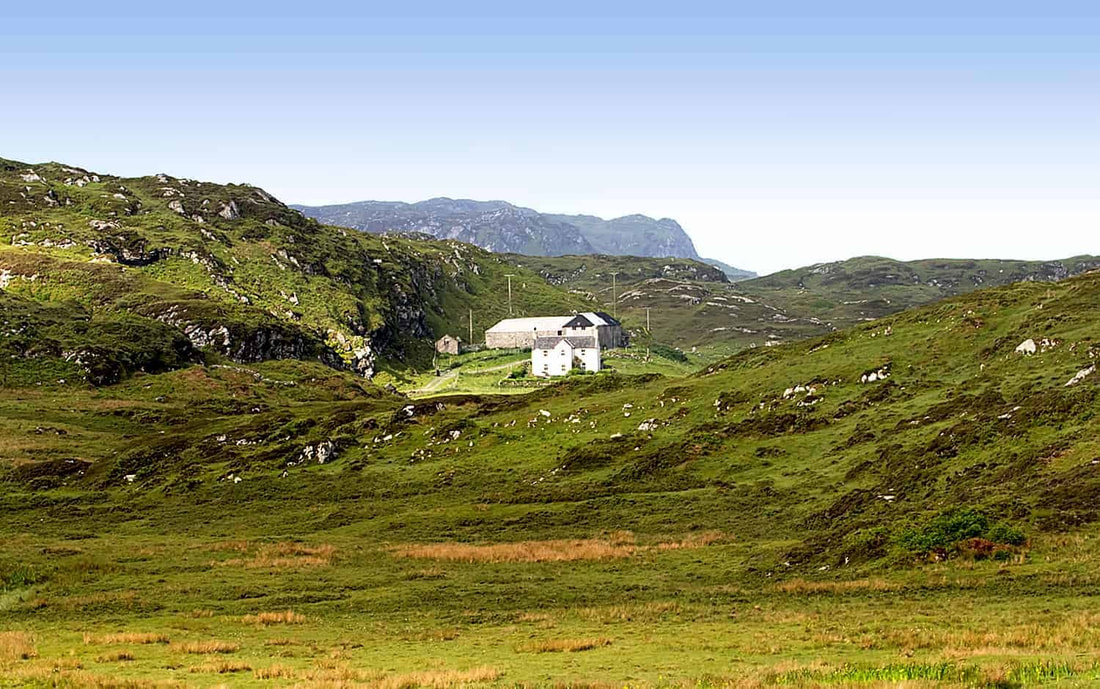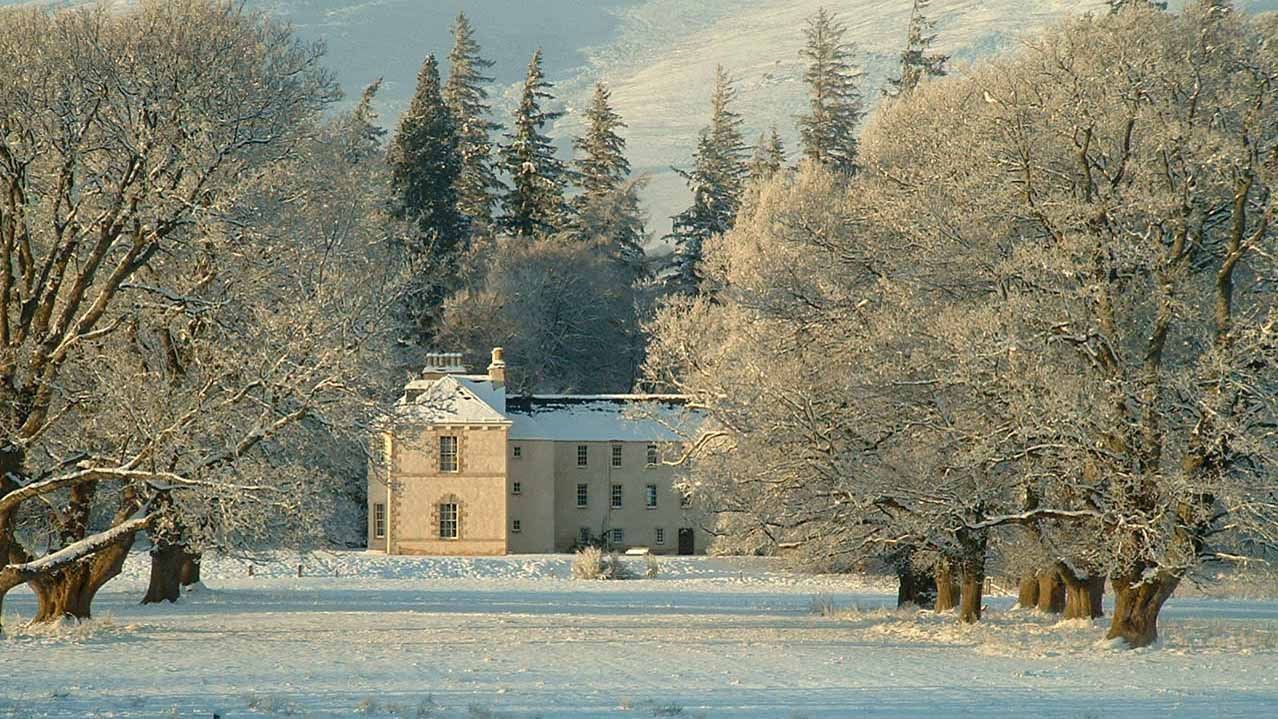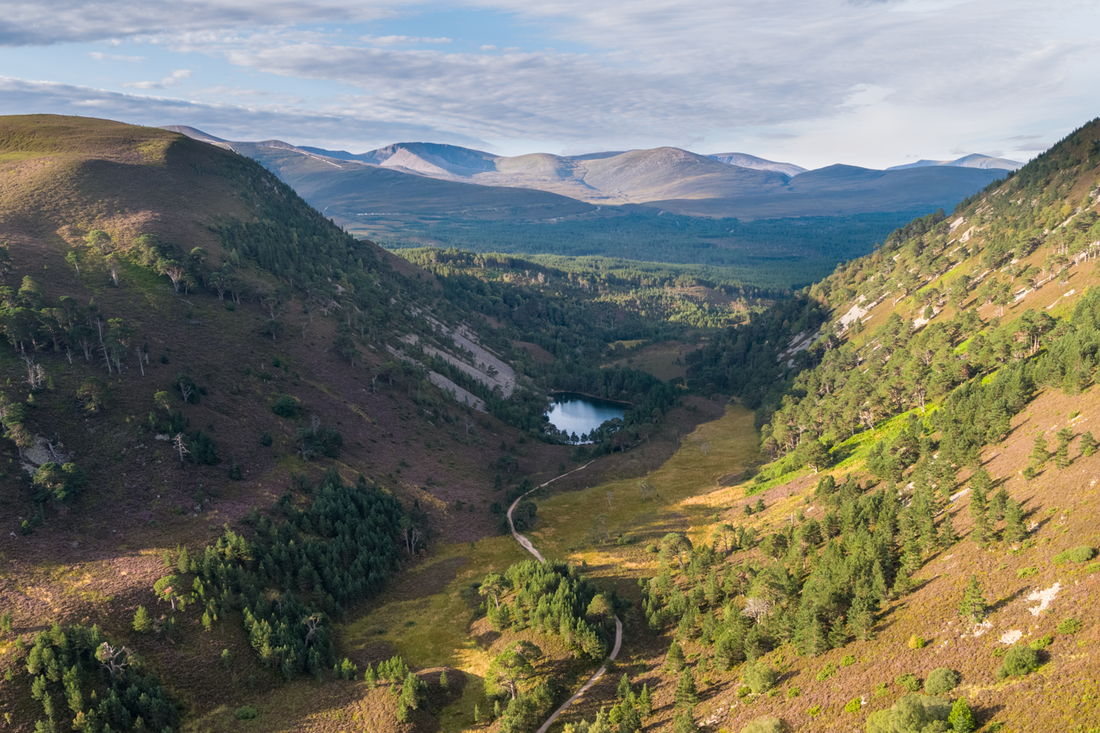 Balnahard farmhouse, from balnahard.com Was out in Colonsay last week, in stunning September weather, so wanted to share something from there! What could possibly link Rothiemurchus with a farmhouse on Colonsay? Why, brownies of course! The Highlands is full of fairy and spirit creatures of many kinds, including the helpful but mischievous sprites, brownies. They're also known as broonies in Scots and brùnaidh in Gaelic. Brownies live in large estate and farmhouses all over the Highlands and, while everyone sleeps, they help out with chores and general fixing jobs, including at Baile na h-Àirde farmhouse, above (now home to Colonsay Wool Growers, have a look! They dye yarn with plants picked from the island, including the by-products of the Colonsay Gin's distilling process). There's a stone nearby with a cavity where milk, or sometimes cream, is poured to feed and keep the brownie happy - though I didn't find it! Once you've poured in the cream for the brownie, you must not look back... This brownie was fed regularly right up until the early 1900s. Closer to home in Strathspey, the old Doune of Rothiemurchus also had a resident brownie, who made such a racket through the night, clattering pots and pans, that the laird became angry and shouted at the brownie, who took a huff and was never seen to help out again. Some years later the new Doune was built, a short distance from the old house. But, if you put your ear to the mound where the old Doune was, you may still hear the faint sound of clattering pots and pans.  The Doune of Rothiemurchus, from rothiemurchus.net If you'd like to hear more stories and folktales of Aviemore and the Cairngorms, join an upcoming short guided walk!
0 Comments
We're travelling a bit for #FolkloreThursday today. Here's Jaulian, a world heritage site at Taxila in Pakistan (took this pic almost exactly 10 years ago so #ThrowbackThursday too!). Jaulian is an ancient Buddhist monastery, and one of the earliest universities in the world. Here they found fragments of manuscripts written on birch bark, which was common practice across Gandhara, an ancient region which stretched across modern-day north-west Pakistan and eastern Afghanistan. Taxila was one of its capitals. A well-known example is the Bakhshali Manuscript, unearthed near Mardan in 1881 by a farmer, and was a collection of 70 sheets of birch bark, inscribed with the mathematical concept of zero - possibly the earliest written recording on the Indian subcontinent. It's been variously dated to somewhere between AD200-900. Not bad for a bit of birch bark! Himalayan birch (Betula utilis) is different to the species which grow here in the Highlands (usually Betula pendula and Betula pubenscens), but their bark can also be used for writing or inscribing on. Just love a bit of birch! If you'd like to hear more stories and folktales of Aviemore and the Cairngorms (and indeed more further afield!), join an upcoming short guided walk!
 Lochan Uaine in Ryvoan Pass, looking towards the Northern Corries © James Shooter/scotlandbigpicture.com It's #folklorethursday! Here's the well-known An Lochan Uaine, the Green Lochan, near Glenmore. You may have heard of the fairy hill overlooking the loch, and the fairies who wash their clothes there, turning the waters the stunning, mysterious green colour. Well. That was all invented by locals to disguise the fact there was illicit whisky distilling going on up the hill... the remains of the still are still there - and of course this is on the Rathad nam Mèirleach, the Thieves Road (noted last week at Loch Gamhna). Fairies or no, mischief was in the air! If you'd like to hear more stories and folktales of Aviemore and the Cairngorms, join an upcoming wee guided walk!
|
AuthorSarah Hobbs - read more on the About page. Archives
July 2023
Categories |


 RSS Feed
RSS Feed